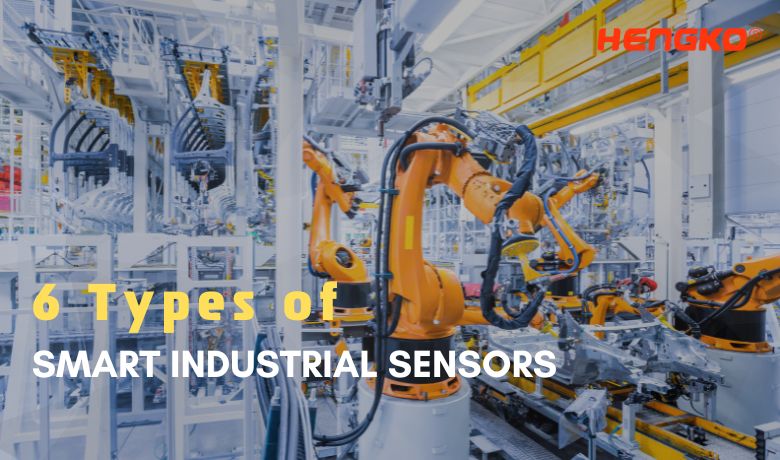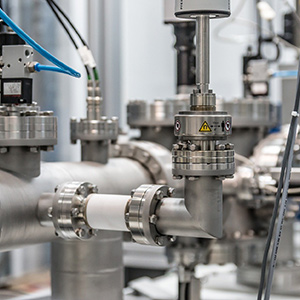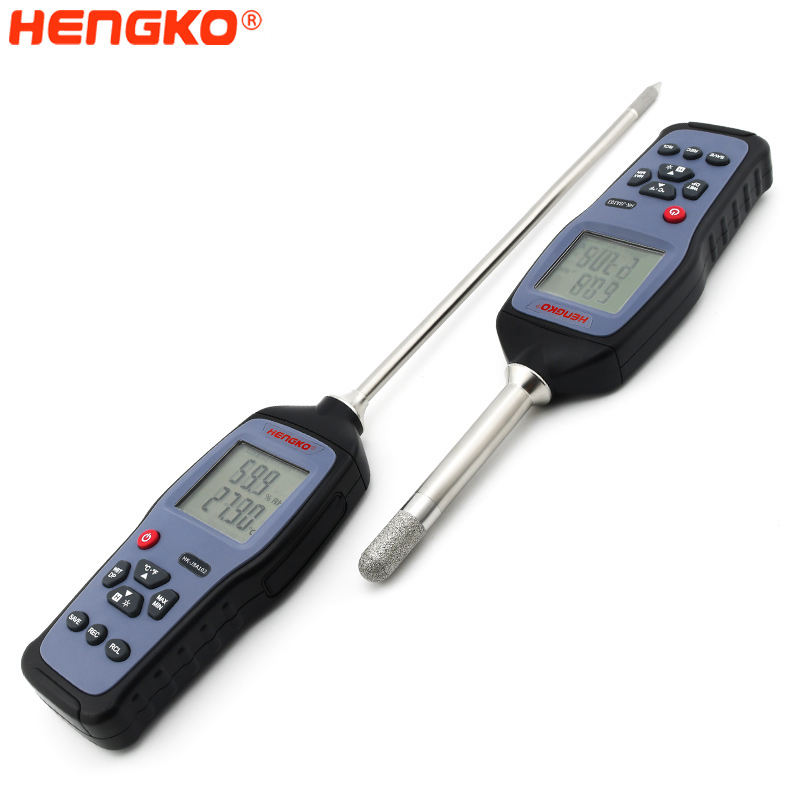
In the development process of industrial automation, the application of various sensors is indispensable to realize automation. The development of automation is the development and application of various sensors. So here we list six different installation accessories that are indispensable in the development of industrial automation equipment.
The key to the smart industry lies in the collection of data and information. Smart industrial sensor is the nerve end of intelligent industry. It is used to collect data and provide basic data support for the construction of smart industry. At the same time, with the rapid development of the Internet of Things, industry 4.0, intelligent manufacturing, application requirements are getting higher and higher. The "Industrial Sensor 4.0" or industrial sensor era is booming. It ranges from industrial process sensing and factory automation, from micro controllers and wired or wireless connections to cloud servers.
1.) Industrial Automation
For Industrial Automation, Smart Sensors allow us to monitor, analyze, and process various changes that occur on industrial manufacturing sites,
such as changes in temperature and humidity, motion, pressure, altitude, exterior, and security.
Here are the various types of sensors most commonly used in automation:
(1)Temperature sensor
(2) Humidity sensor
(3) Pressure sensor
(4) Liquid level sensor
(5) Infrared sensor
(6) Proximity sensor
(7) Smoke sensors
(8) Optical sensors
(9) MEMS sensor
(9) Flow sensor
(9) Level sensor
(10) Vision Sensor
1. Temperature and Humidity Sensor
During Industrial production, Temperature and humidity Sensor are the most commonly measured physical parameters. A temperature and humidity sensor is a device that collects information about temperature and humidity from the environment and converts it into a specific value. HENGKO HG984 intelligent temperature and humidity detection collector and temperature and humidity transmitter are the most widely used in industrial automation. Temperature and humidity calibration instrument can measure Fahrenheit and degrees Celsius, humidity, dew point, dry and wet bulb data, without carrying dew point instrument can measure the air dew point to achieve a multi-purpose machine. Passed CE certification, it is an ideal humidity measurement standard instrument in the fields of clean room, scientific research, health quarantine, comparison standard and production process. It has the characteristics of high precision in full range, strong stability, good consistency and fast response.
A temperature and humidity sensor is an integration of a temperature sensor and a humidity sensor. As a temperature measuring element, the temperature and humidity probe collects temperature and humidity signals, and after circuit processing, converts them into current signals or voltage signals linearly related to temperature and humidity, and outputs them through 485 or other interfaces.
2.The Pressure Sensor
Pressure sensor is a device that can sense the pressure signal and convert the pressure signal into a usable output electrical signal according to a certain law. Pressure sensors are used to monitor pipelines and send leak or abnormality alerts to a central computing system to alert supervisors that maintenance and repairs are required.
What is Pressure Sensor ?
Pressure sensors, sometimes referred to as pressure transducers, pressure transmitters, or pressure switches, are devices that sense and convert pressure into an electrical signal. The variations in the pressure are translated into changes in the electrical output, which can be measured.
The operating principle behind a pressure sensor is that it measures pressure typically of gases or liquids. Pressure is an expression of the force required to stop a fluid from expanding and is usually stated in terms of force per unit area.
There are several types of pressure sensors and they can be classified in various ways, for example, by the type of pressure they measure, by the type of technology they use, or by the type of output signal they provide. Here are some common types:
1. Absolute Pressure Sensor:
These sensors measure pressure relative to the perfect vacuum (zero reference point). They're used in a variety of applications including atmospheric pressure monitoring and altitude sensing.
2. Gauge Pressure Sensor: These measure pressure relative to the ambient atmospheric pressure. They're often used in industrial process systems and fluid power applications.
3. Differential Pressure Sensor: These sensors measure the difference in pressure between two points within a system. This type of sensor is often used in flow and level measurement applications.
4. Sealed Pressure Sensor: These measure pressure relative to a sealed reference pressure. They're typically used in refrigeration and air conditioning systems.
There are also various technologies used in pressure sensors, including:
5. Piezoresistive Pressure Sensors: The most common type, these sensors change resistance as pressure is applied. The resistance change is measured and converted into an electrical signal.
6. Capacitive Pressure Sensors: These sensors use a diaphragm and pressure cavity to create a variable capacitor to detect strain due to pressure.
The changes in pressure change the capacitance, which is converted to an electrical signal.
7. Optical Pressure Sensors: These sensors measure the changing light intensity due to pressure change. They offer high sensitivity and immunity to electromagnetic interference.
8. Resonant Frequency Pressure Sensors: These sensors detect changes in resonant frequency to measure pressure. They're known for high accuracy and stability over a wide temperature range.
9. Piezoelectric Pressure Sensors: These sensors generate an electric charge in response to pressure. They're typically used for measuring dynamic pressure events.
The type of pressure sensor chosen depends on the requirements of the specific application, including the type and range of pressure, the required accuracy, the operating temperature, and more.
3 .Proximity Sensors:
These sensors are used to detect the presence or absence of objects without any physical contact. They work on the principle of electromagnetic fields, light, or sound (ultrasonic). There are several types of proximity sensors, including inductive, capacitive, photoelectric, and ultrasonic proximity sensors.
4.Infrared Sensor
Infrared Sensor is a kind of infrared to process data equipment. Any substance can radiate infrared light at a certain temperature (above absolute zero). Application of infrared sensor: Infrared sensor is widely used in medicine, military, space technology, environmental engineering and other fields. Infrared sensors integrated with industrial IOT solutions are also used in other industries.
5. SMOG Sensor
Smog sensor can detect a fire or a large amount of smog produced in the production process, and send an alarm signal in time. The detector is controlled by single chip microcomputer, which can judge the smog produced by fire intelligently and give an alarm. Smoke sensor is an indispensable sensor in inflammable and explosive industrial production environment. When smog sensors are integrated with an IoT solution, even the slightest gas leak or minor fire can be reported to the relevant team, preventing a major disaster. Smoke sensor applications: widely used in HVAC, construction site monitoring, and industrial units with high possibility of fire and gas leakage.
6. MEMS Sensor
Mems Sensor is a new type of sensor manufactured by using microelectronics and micromachining technology. Compared with traditional sensors, it has the characteristics of small size, low power consumption and high reliability, and is suitable for mass production. As a key component to obtain information, MEMS sensors play a great role in the miniaturization of various sensing devices. They have been used in space satellites, launch vehicles, space equipment, aircraft, various vehicles, as well as special medical and consumer electronics fields. Industrial Internet has brought a huge market for the development of sensors, industrial Internet and sensor development can be said to complement each other.
For HENGKO, we professional manufacturing and supply variety industry temperature and humidity sensor and solution, so if have any questions for our humidity sensor
please feel free to contact us by email ka@hengko.com for details and price. we will send back within 24-hours.
Post time: Mar-16-2022







